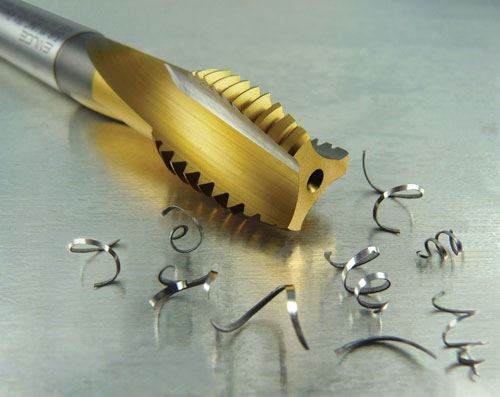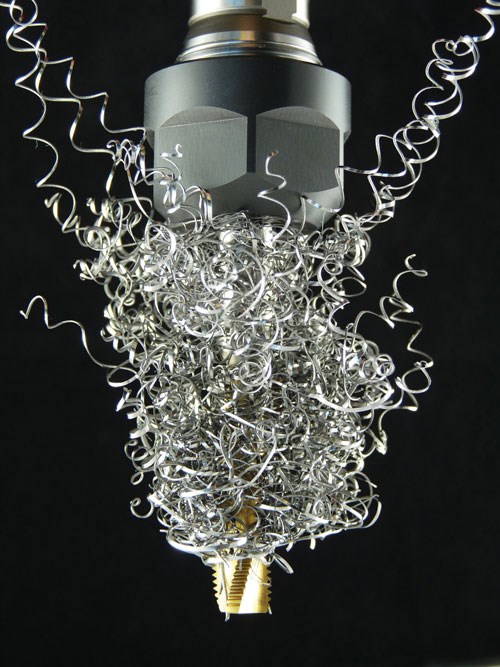Tapping Oil Field Parts
Emuge’s Rekord DZBF taps promote the uninterrupted flow of chips out of the cutting zone to protect oil field components during hole-threading operations.
Thread connections are common—and critical—on many oil field parts such as blow-out preventers, valves, pumps, pump jacks, compressors and gears. Tapping operations on openings in these components can be complicated by problematical chip evacuation. To address these difficulties, Mark Hatch, product director—taps and thread mills at Emuge Corp. (West Boylston, Massachusetts) offers these observations and product recommendations.
Emuge CBTz, the company’s latest development in chip-breaking technology. It is designed to promote the uninterrupted flow of chips out of the cutting zone. This eliminates the potential
for tap failure due to chip packing in the flutes or chips birdnesting around the shank, Mr. Hatch says.
Related Content
How to Mitigate Chatter to Boost Machining Rates
There are usually better solutions to chatter than just reducing the feed rate. Through vibration analysis, the chatter problem can be solved, enabling much higher metal removal rates, better quality and longer tool life.
Read More10 Tips for Titanium
Simple process considerations can increase your productivity in milling titanium alloys.
Read MoreNew Modular Tool Options for Small Spindle Milling
Tooling options have been limited for small spindle milling applications. Now modular, indexable systems are available that provide broad flexibility to get the right cutter for the job with less inventory and at lower cost.
Read MoreA New Milling 101: Milling Forces and Formulas
The forces involved in the milling process can be quantified, thus allowing mathematical tools to predict and control these forces. Formulas for calculating these forces accurately make it possible to optimize the quality of milling operations.
Read MoreRead Next
3 Mistakes That Cause CNC Programs to Fail
Despite enhancements to manufacturing technology, there are still issues today that can cause programs to fail. These failures can cause lost time, scrapped parts, damaged machines and even injured operators.
Read MoreThe Cut Scene: The Finer Details of Large-Format Machining
Small details and features can have an outsized impact on large parts, such as Barbco’s collapsible utility drill head.
Read More.png;maxWidth=970;quality=90)










.png;maxWidth=300;quality=90)














